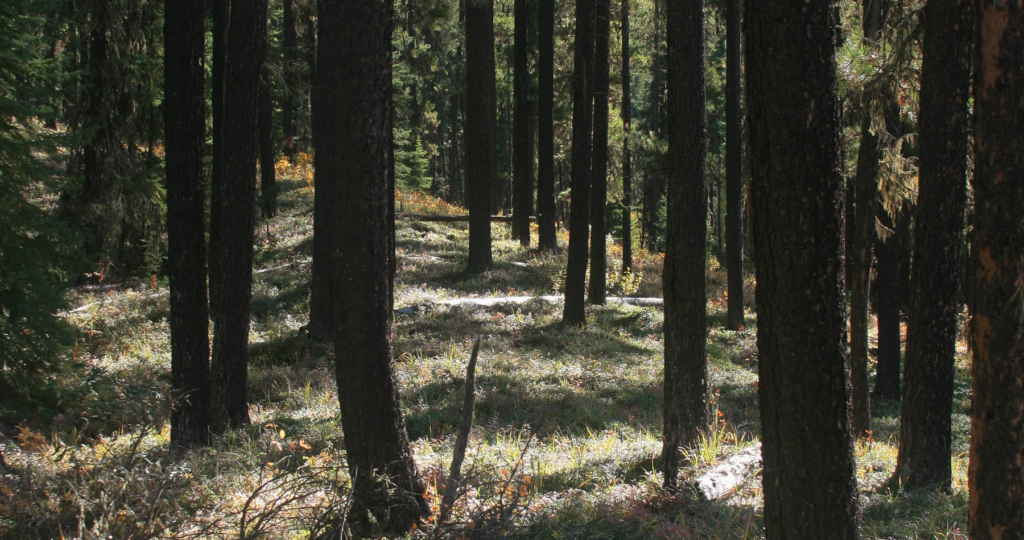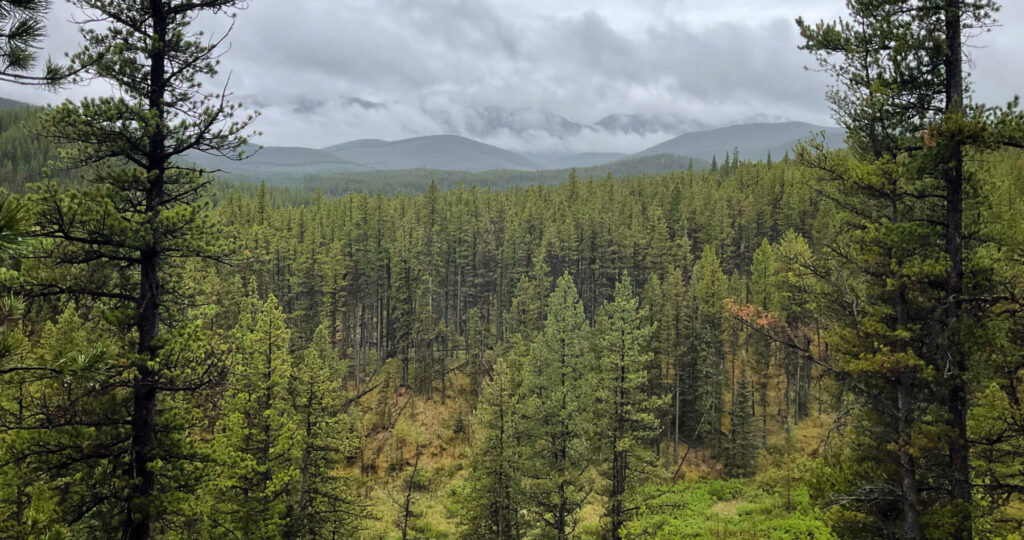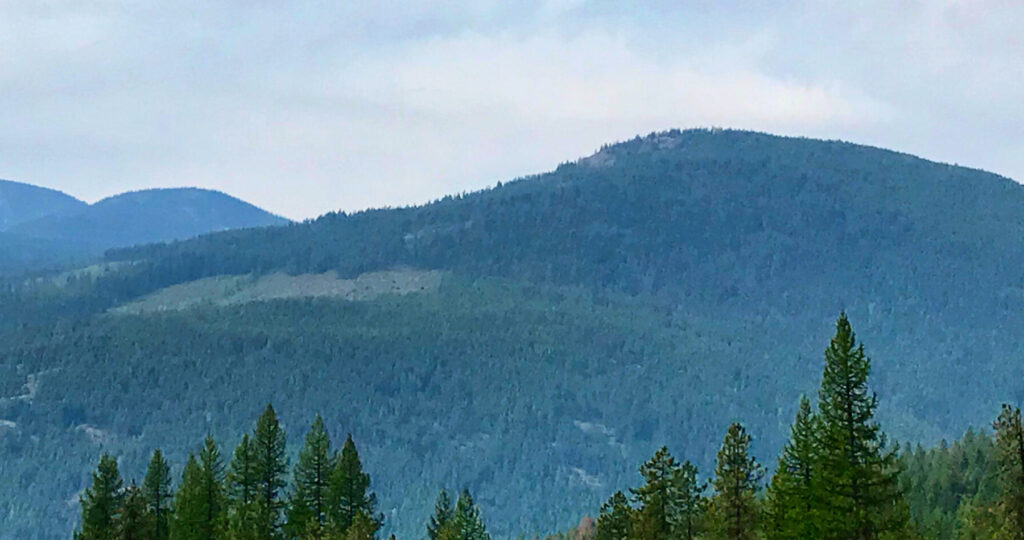Post Category : Glossary Heritage Management Method & Theory
Culturally Modified Trees of the Interior, British Columbia
A Foreword
For the Archaeologists who’ve found themselves interested in the niches of Ecology and Landscape-Use-Dynamics, we tend to recognize the landscape as a dynamic whole; a manuscript of activities, knowledge, and ideologies that human societies have crafted and applied to the environments in which they live.
However, Professional Consulting Archaeologists in Cultural Resource Management (CRM) rarely find themselves in positions with the capacity to thoroughly investigate the complexities of landscape-use sites throughout the Boreal regions of Canada. In particular, the Interior Plateau of British Columbia. Nonetheless, the increasing rates of Indigenous engagement, the resurgence of Stewardship ideologies, and the continuous evolution of CRM policies, standards, and guidelines, is resulting in a reputable record of data from which promising future research studies can be built upon.
What are CMT’s?
In a nutshell, a Culturally Modified Tree (CMT) is an Archaeological and/or Historic feature. The classifications of CMT’s are based on the types of modifications present on the trees. Generally, modifications made to a trees surface, shape, and growth are evidence of anthropogenic (human) activity. A CMT can provide a plethora of information about human-landscape-use dynamics, such as:
- Subsistence
- Habitation
- Resource and material sourcing
- Travel and navigation
- Seasonality
- Forest management
- And many more
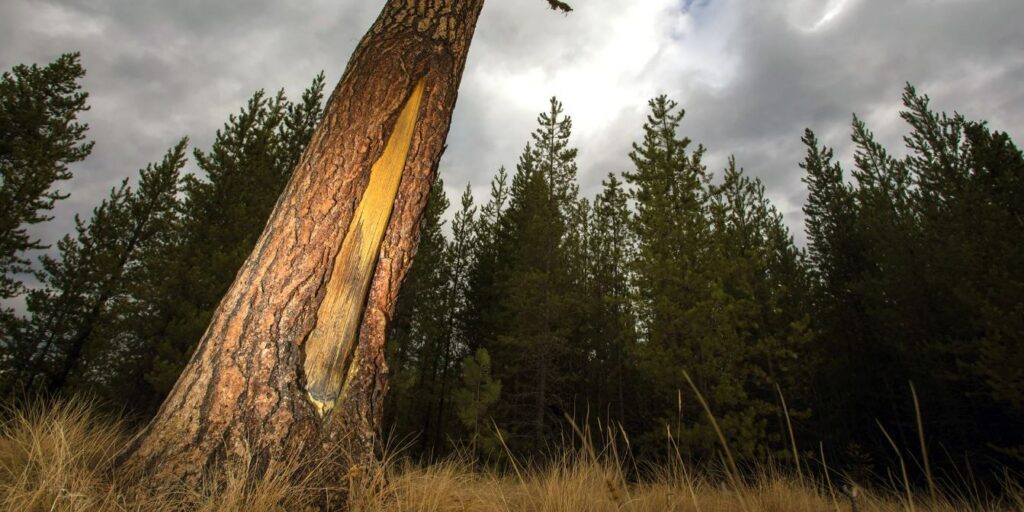
Classes of CMT’s
Generally speaking, there are three primary classes of Culturally Modified Trees known to be referenced by professional consulting Archaeologists in Canada. The first class is called “Bark-Stripped” (BS), the second is “Aboriginally-Logged” (AL), and the third is “Other Modified” (OM), all of which are further divided into several types. Furthermore, the known Archaeological record of each type varies by region, tree species, and chronology (time).
However, it should be noted that the processes for identification, recording, sampling, analysis, and subsequent reporting vary between the respective provincial and territorial branches across Canada. To review a formal operational guide most applicable to the topic of this article, check out the Bulletins and Policies page on the Government of British Columbia website.
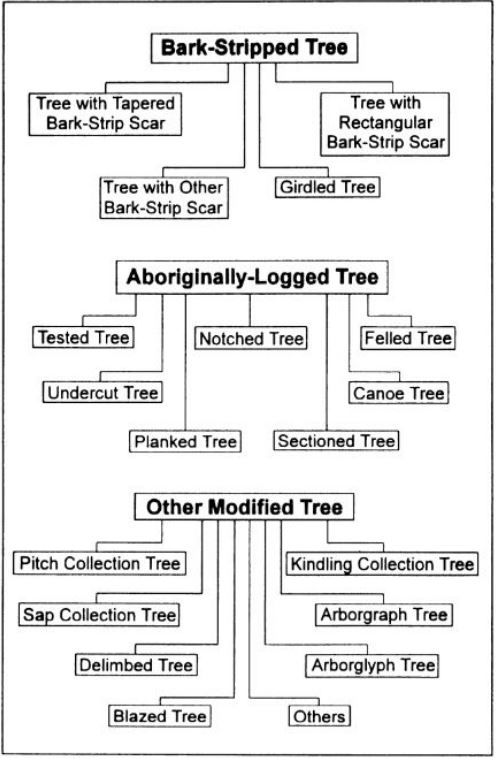
Bark-Stripped
Depending on the culture zone, ecological region, tree species, and seasonality at the time of modification, bark can be stripped for the following reasons:
- Cambium harvest. Cambium is the thin living layer situated between the outer bark and the wood of the tree. This material has been collected and processed for food and medicine by many Indigenous cultures throughout the Boreal. These scars are commonly identified on Lodgepole Pine trees throughout the Interior Plateau and Sub-Alpine regions.
- Inner/outer bark harvest. The inner bark of many tree species is fibrous, malleable, and collected for its medicinal or cleansing properties. The outer bark of many tree species is often sought as a building or manufacturing resource for canoes, roofing, flooring, and more. Additionally, several layers of numerous species are harvested as fire and dye materials.
- Others.
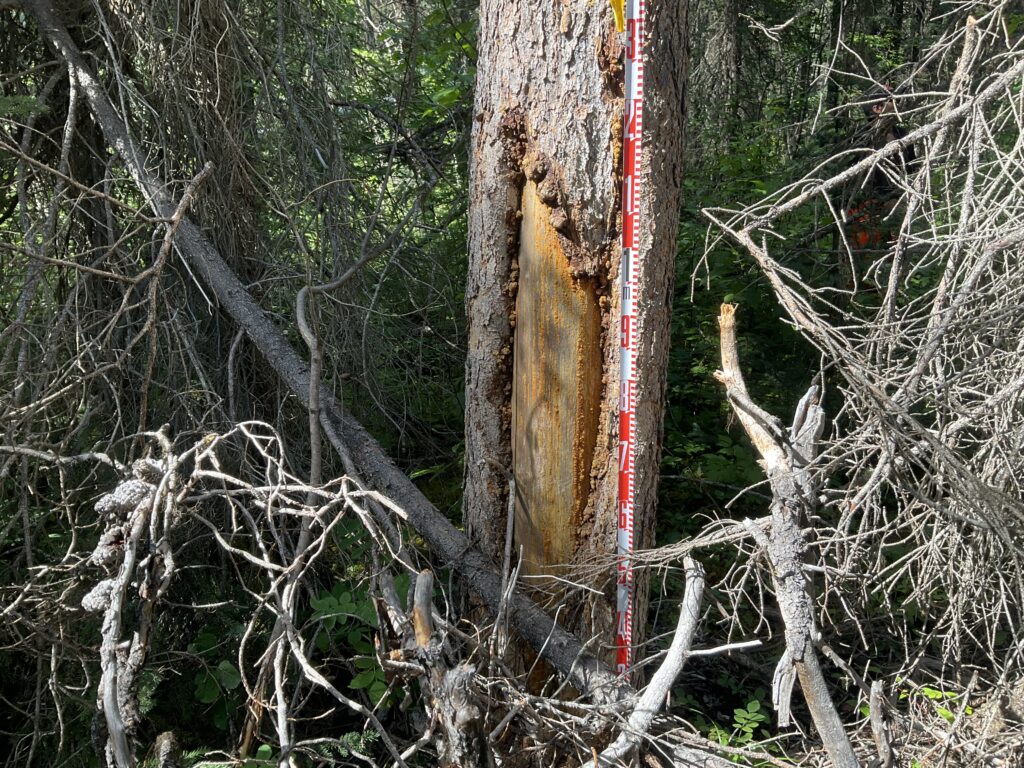
Aboriginally-Logged
Depending on the culture zone, ecological region, and tree species, Aboriginally-Logged tree’s can include the following:
- Felled logs, also known as “stump and logs”. This type of CMT is characterized by the absence of the medial section within a standing stump. Often, the medial sections are the healthiest and most-intact segments. These targeted sections are known to have been used for canoes, totem poles, and house posts.
- Sectioned trees. Similar to felled trees, these features have removed sections, as well. The terminology for each section includes: butt (closest to the stump), medial, and crown.
- Canoe trees. This refers to a felled or sectioned tree that has been partially shaped into a canoe. These types of CMT’s are most often recorded along the coasts of British Columbia, where cedar’s grow.
- Others.
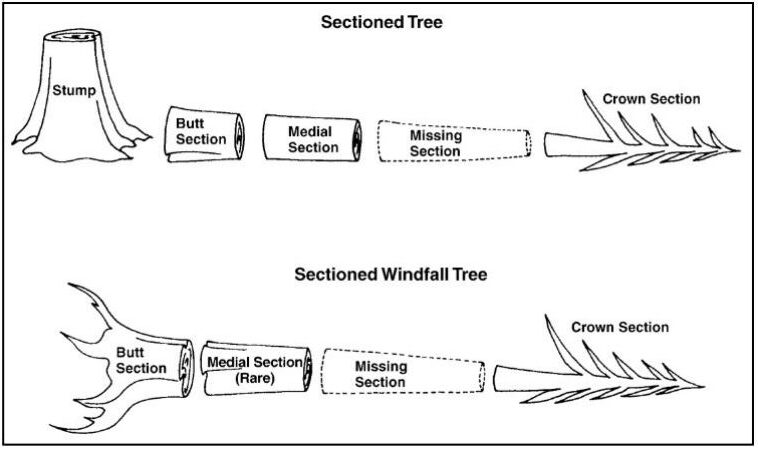
Other Modified
Depending on a combination of contextual factors, other modified trees can include the following:
- Arborglyph/arborgraph (message) trees. Arborglyphs are carvings on trees, whereas arborgraphs are paintings. These types of modifications are rare in the archaeological record, but an increase in records is anticipated as more ethnographic studies with Indigenous communities are conducted.
- Blazed trees. These are usually small, triangular or diamond shaped scars, commonly representing the locations of trails, camps, or directions to hydrological sources, caches, and more.
- Kindling Collection. These are found on naturally occurring scars, such as fire scars or porcupine chews, and pre-existing CMT scars. The tool markings on the scar face are characteristic of the type. Pre-existing scars are often targeted for kindling collection due to the ease of access, and the likelihood of the inner-wood having already been dried out, making it perfect kindling material.
- Sap collection. Although variable by species, the sap or pitch that collects on the carved surfaces of exposed wood serves many functions. Such as, an adhesive, medicine, fire starter, and many others.
- Others.
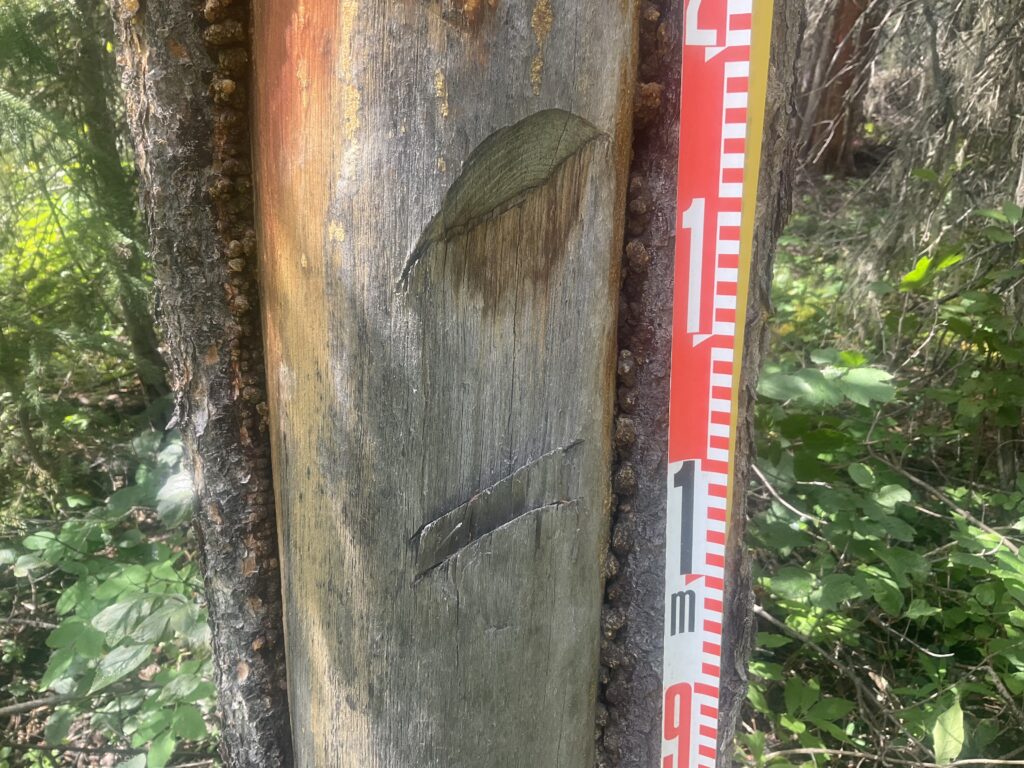
The Significance of CMT’s
According to M. Eldridge (1997), Culturally Modified Trees are significant because:
- The presence of CMT’s allows for rapid and large scale assessments to be conducted, where inexpensive and minimally destructive data can be obtained.
- CMT’s offer a range of data that is significant to a variety of research topics, such as:
-resource utilization.
-settlement patterns.
-technological developments.
-population concentration.
-others. - CMT’s often co-occur with other types of Archaeological sites.
- CMT’s are usually resources with high interpretative value and economic potential, and are of inherent interest to Archaeologists, Indigenous communities, and the general public alike.
- CMT’s can verify oral histories, trail locations, and early historic documentation.
- CMTs have the potential to inform poorly understood methods of traditional forest utilization and management.
“They are also of legal significance. Because the age of a tree can be precisely recorded, CMTs are proof of traditional, long-term occupancy and use of forests, so are powerful testaments to the strength of claim when Indigenous rights are under discussion. CMTs in British Columbia have been dated as far back as 1137 AD, which to put in historical perspective, is the year the Second Crusade was begun by Pope Eugenius III and European nobles to recapture the city of Edessa, an important commercial and cultural centre on the edge of the desert of Syria in Upper Mesopotamia.” –Indigenous Corporate Training Inc. See also: Ancient Forest Alliance.
Culturally Modified Trees are limited in their scientific significance because:
- These resources often cannot be preserved in the long-term because of the lifespan of the trees in which the modifications occur, and other natural influences or mechanisms (e.g., wind, flood, drought, and fire).
- The links between CMT’s and other Archaeological sites requires further study.
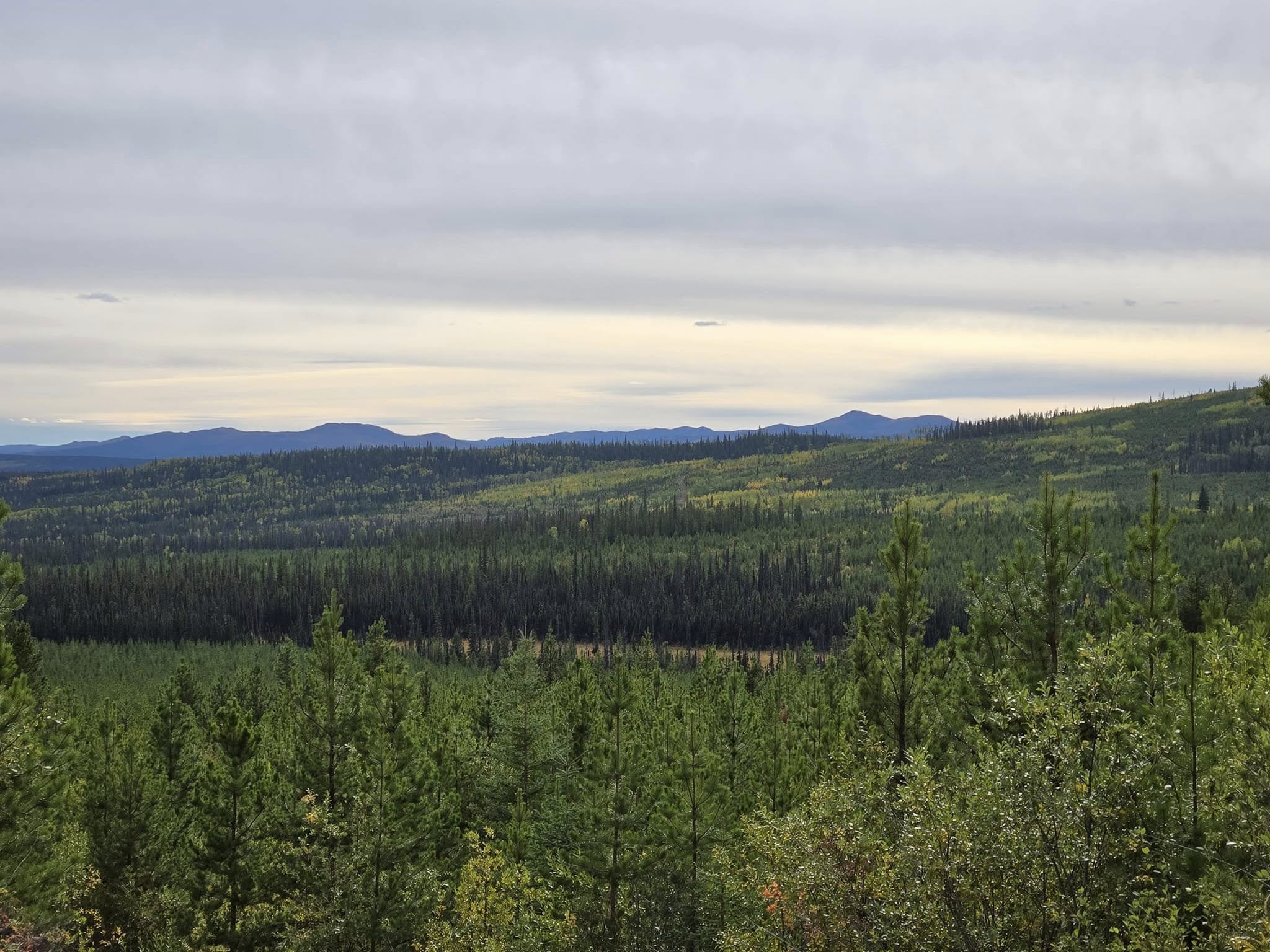
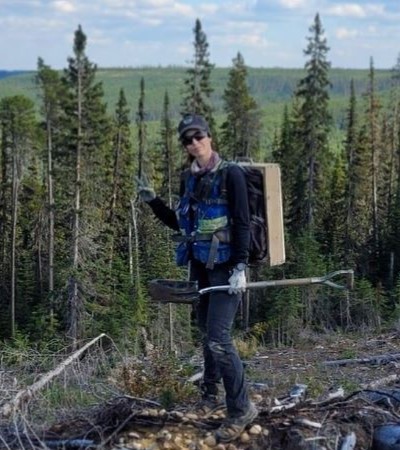
Fallon Hardie
Junior Field Director

